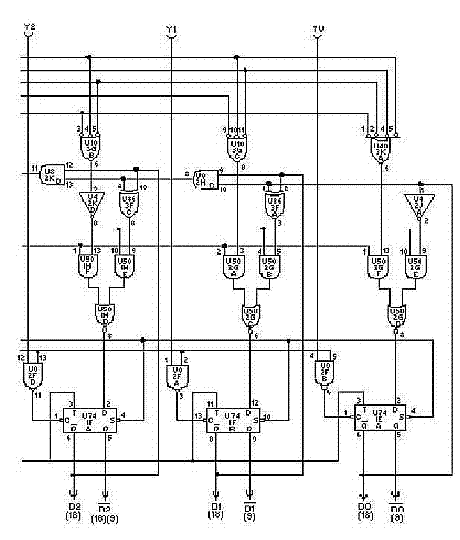Special Logic Circuits
Special Logic Circuits Introduction
The illustration below is a portion of a typical logic diagram. It is similar to the diagrams you will encounter as your study of digital circuitry progresses.

Typical logic diagram.
Look closely at the figure above. You will see many familiar logic gates. You will also see several that you may not recognize.
Digital equipment must be capable of many more operations than those described in the previous tutorials. Provisions must be made for accepting information; performing arithmetic or logic operations; and transferring, storing, and outputting information. Timing circuits are included to ensure that all operations occur at the proper time.
Computer circuits and other complex computing systems are made up of many thousands of micro gates consisting of special logic gates. In order to understand how logic gates work it is vital that you learn how each gate works and relates to the function of a system.
Microcircuits utilize these gates in microscopic millions inside circuit chips and other linear micro components such as a microprocessor that you have in your computer. These special gates are responsible for many complex calculations that your computer processes. Without them micro processing would not be possible.
Study each tutorial in depth and be sure to go back and study the tutorials on standard logic gates such as the AND, OR and NOT gates.
In the tutorials to follow you will become acquainted with the
special logic circuits
used to perform the operations mentioned above.
Exclusive logic gates OR and NOR
Quarter, Half, and Full Adders
Parallel adder's and subtraction
An introduction to flip-flops starting with the R-S flip-flop
Toggle and D Flip Flops
The JK flip-flop
Clocks
Ripple and synchronous counters
Decade and ring counters
Down Counter
Registers
Shift registers, serial and parallel transfers, and conversions and scaling
Logic-families: Resistor and diode transistor logic















